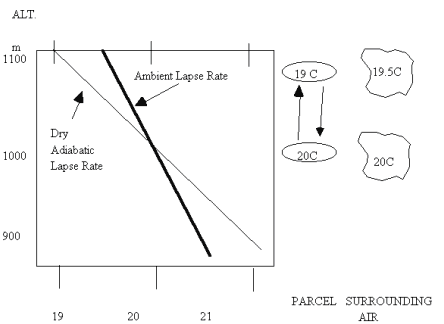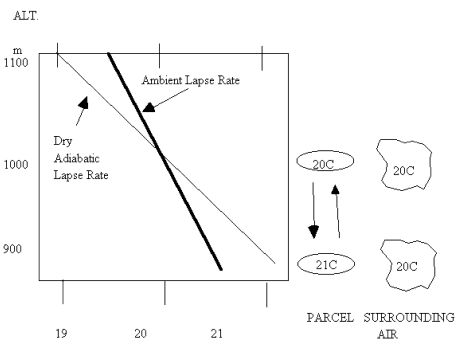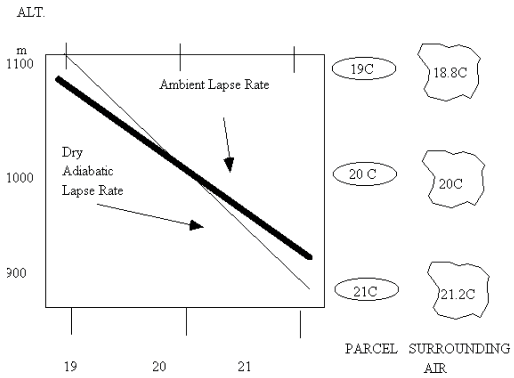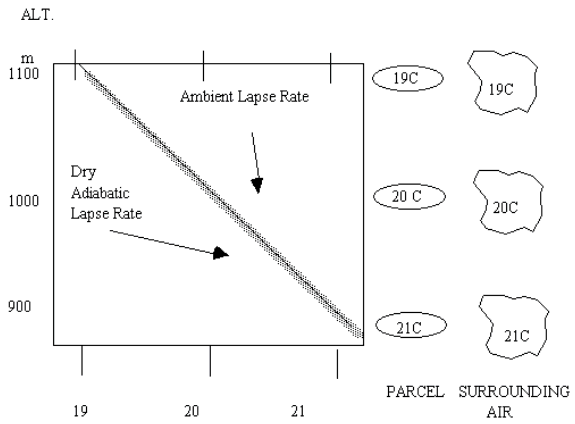
| Atmospheric Stability |
|
However we should not run away with the idea that an unstable atmosphere always gives us the most favourable results. In fact, close to the source an unstable atmosphere often produces severe localised pollution problems. Remember we are interested in lapse rates because of the effect that the relative values of real temperature gradients (ambient lapse rates) and predicted lapse rates have on stability of the atmosphere. Consider a situation in which the ambient temperature profile cools slower than the adiabatic lapse rate. And then consider a parcel of air a given altitude with the same temperature as the surrounding air. |
 |
|
If something happens to raise the parcel of air through a given distance, at a fast enough rate to prevent heat exchange with surroundings, it will expand and in doing so will cool such that it is colder (and thus denser) than the surroundings. This will mean that the density of the parcel will be greater than that of the surroundings and it will tend to fall back to its original position. If the parcel is moved downwards it will warm up faster (with respect to altitude) than the temperature of the surroundings and thus, being warmer than the surrounding air, will rise back to its original position. |
 |
|
This situation in which ambient lapse rate is less than adiabatic lapse rate corresponds to a stable atmosphere. The ambient lapse rate is said to be Subadiabatic. WHAT IF THE AMBIENT LAPSE RATE IS SUPERADIABATIC? Pushing the parcel of air upwards will cause it to cool at the adiabatic lapse rate. It will be warmer than the surrounding air and will thus be less dense and more buoyant. |
 |
|
It will therefore continue to rise. The atmosphere is said to be unstable. Remember that the moving parcel of air will always cool or warm up at the adiabatic lapse rate. And its resultant temperature relative to ambient will control whether it continues to move in the same direction or return to its original position. WHAT IF THE AMBIENT LAPSE RATE IS THE SAME AS THE DRY ADIABATIC LAPSE RATE? |
 |
| The atmosphere is said to be neutrally stable and a parcel air that is moved up or down will remain at its rest position. |